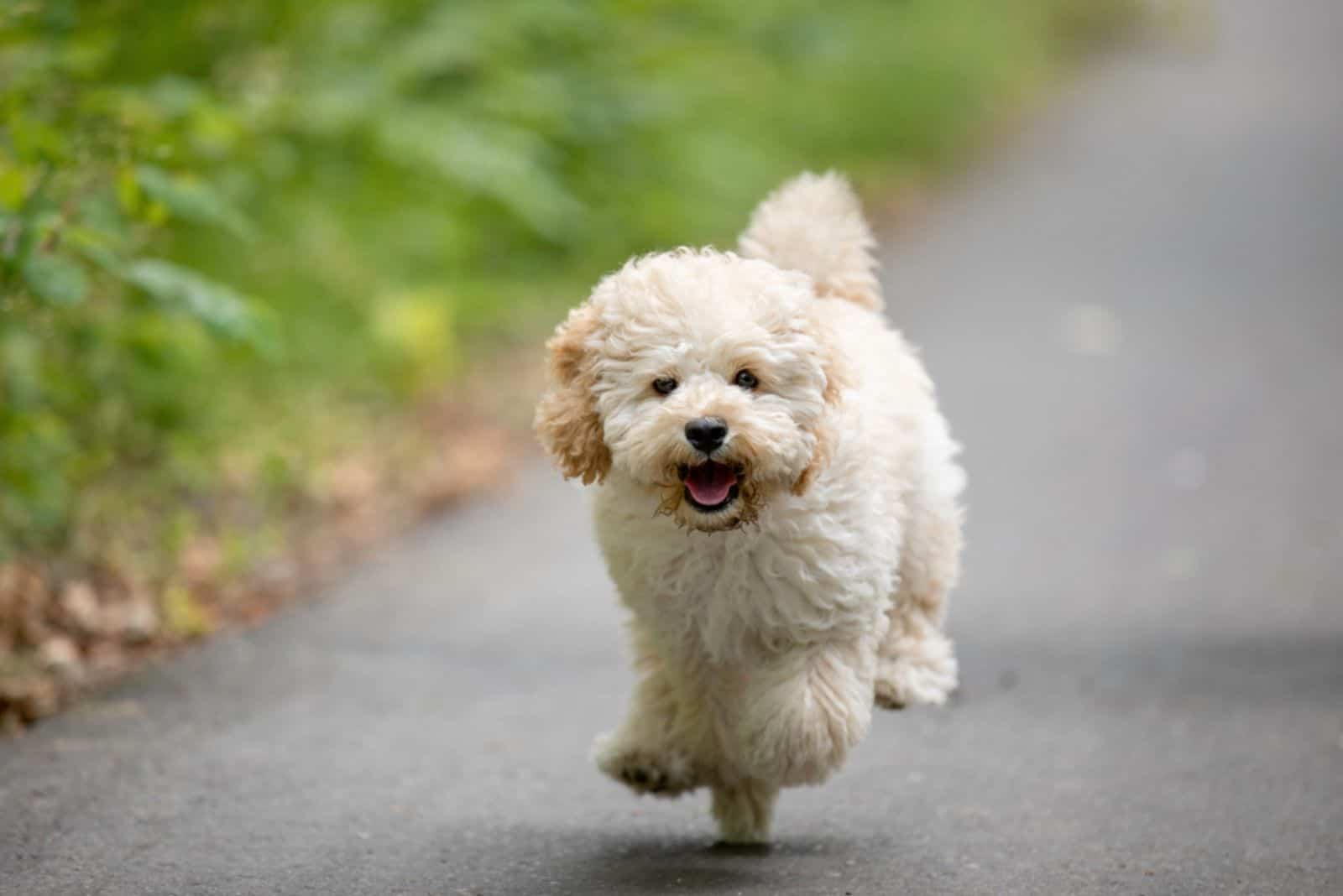Designer dogs have been popular for a while now, and clocking in on an option that suits you and your family can be very stressful. With dozens or even hundreds of options available, researching every single mix becomes tiresome pretty quickly.
I figured it was time a definitive answer was provided to answer the question, “Are Maltipoos good dogs?”. Every dog is a good dog. The differentiation has to be done between this question and whether the Maltipoo is a good dog breed for what you need.
Many of its physical and behavioral traits are perfect for family homes, and there are only a few minor “downsides” to owning one. In this quick read, you will have everything necessary to scratch it off your list or go ahead and buy it.
What Makes A Maltipoo Dog Good?
Quite a few things, to be frank. Whether it is size, coat color options, intelligence, or any other trait that looks like an amazing deal to you, the Maltipoo has got it. I am not saying this is the perfect dog for every scenario, but it comes pretty close.
Since the crossbreed was created as a designer dog with some positive physical traits (low shedding coat comes to mind) as the ultimate goal, we should first get into what bodily features make the Maltipoo a good dog.
Physical Traits That Will Win You Over
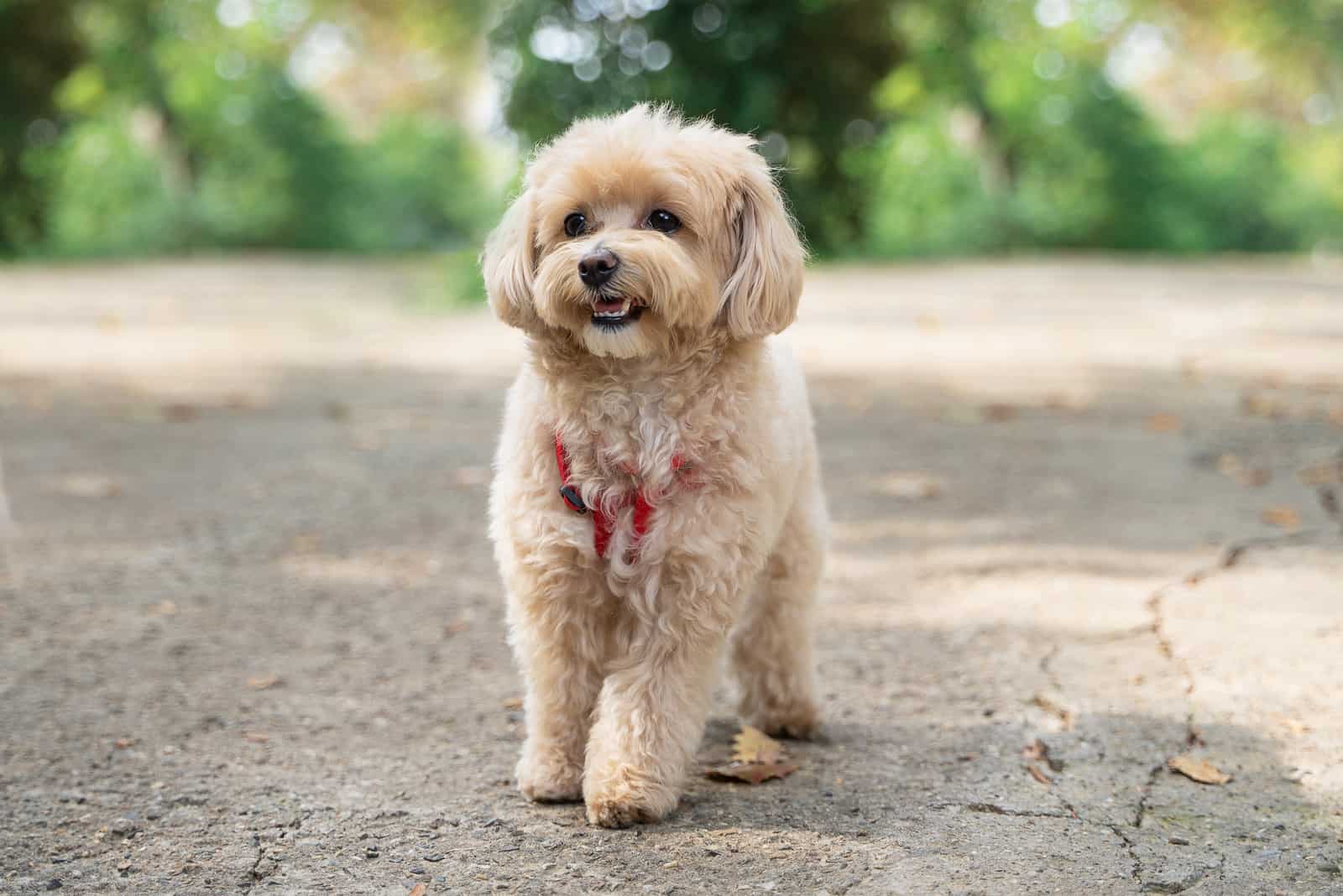
Plenty of things play into the Maltipoo’s hands. One of the biggest advantages of a Maltipoo over other similar designer breeds is its “hypoallergenic” coat properties. While there is no such thing as a hypoallergenic dog, they are indeed among the most allergy-friendly dogs you could get.
An adult Maltipoo will be eight to fourteen inches tall and can weigh between only five and twenty pounds. These factors are dependent on whether the Maltese was mated with a Miniature Poodle or a toy Poodle.
Sporting a medium or long coat that is curly or close to it, they are low shedders that require a bit more effort with grooming. However, dander is produced in low amounts, and they virtually never drool, which puts them in the “hypoallergenic” category.
Their small size is great for both apartment and house living, so you get a highly adaptable dog whether you live in the city, suburbs, or rural area. Forget about a boring life with these cuddle machines. They are one of the happiest dog breeds out there to keep you entertained.
Cuteness is a major factor for those who wish to have an eager dog with a gentle expression. The Maltipoo has been the staple cutie for some time, so the floppy ears and tiny ever-wiggling tails are a breath of fresh air on a rainy day.
Many coat colors and styling potential might awaken the fashionista in you. There are many hairstyles that look good on this crossbreed, but we made a list of the fifteen best-looking ones with a few grooming tips included. Make sure you check it out.
Coat Colors
There are eight color options with four patterns that can elevate your designer dog to another level. Whether you prefer a solid color main coat or enjoy a bit of color pop, Maltipoo colors and patterns provide you with a comprehensive palette of design.
Because this is a mixed breed, it is impossible to say with certainty what colors are “exclusive” to the Maltipoo. The Poodle parent has over four dozen color options, while the Maltese comes in three “conservative options”.
Depending on the parent colors, your Maltipoo can be any combination of the thirty or so colors available through genetic heritage. Keep in mind that the American Kennel Club does not recognize this hybrid dog, and not all purebred parent breed colors are deemed standard.
Mindbendingly Good

A crossbreed engineered to be the perfect companion dog for allergy sufferers does not disappoint in terms of moderate to high energy levels. Its playfulness is out of this world, and it does not require much intense exercise either.
Longer walks at a moderate pace will keep that energy in check. Still, if you prefer something more structured, like agility courses or games that encompass obedience training, physical exercise, and the outdoors, this dog will gladly follow your lead.
Obedience training is required with every dog, but the Maltipoo loves pleasing its owners and makes for a great pupil. You can teach it almost any trick imaginable without losing your nerves.
New owners have to be aware that this dog is sensitive and responds best to positive reinforcement. Smaller dogs tend to be more insecure than big dogs, so they will look to you for protection and leadership.
The daily exercise needs are moderate, but they do require moderate to high mental stimulation. A game of fetch, teaching them to recognize objects (favorite toys), playing games that make use of that glorious canine nose, etc., are great ways to keep the brain cells engaged.
Maltipoos are great with kids and love hanging out with strangers. With proper socialization, this hybrid dog makes for an incredible first-time owner’s dog. Loyalty, paired with a low prey drive, puts them among the best crossbreeds for homes that have other pets, including dogs.
Most of the time, they will be fine with lying in your lap and enjoying some deep cuddles while you relax with some movies or music. This is the good side of the answer to “Are Maltipoos good dogs?”. Time to see the downsides of owning one.
The Less Good Side Of Maltipoos
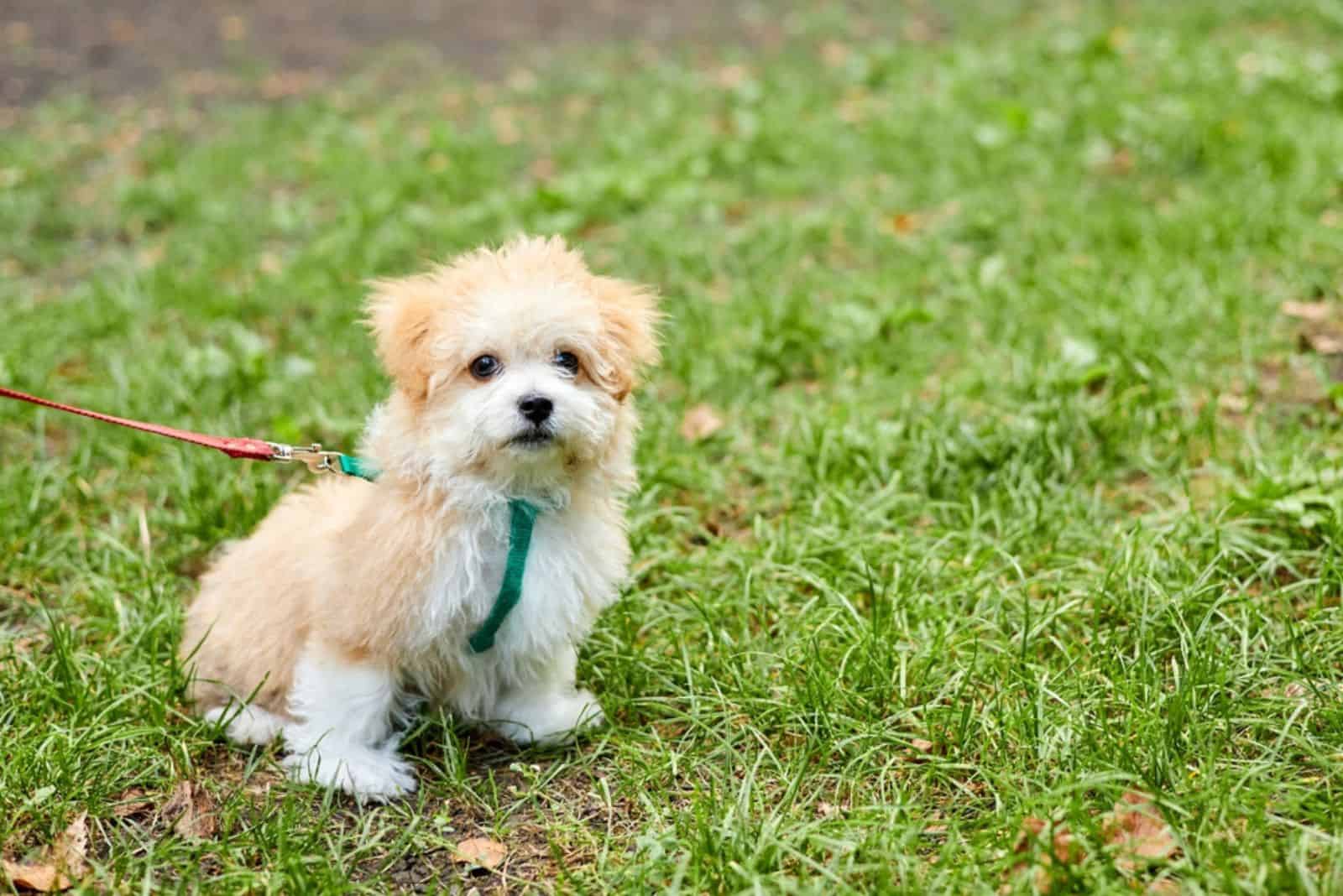
Perfection does not exist, but we can always strive for it. Maltipoos are great family dogs, but there are things that do not go in their favor. One of those things is directly related to the genetics of the hybrid dog and its parent breeds — health problems.
We could put the health issues under the physical aspect of the Maltipoo’s “bad” side, but Maltipoo temperament plays a part in traits that make it less desirable. Time to see what off-putting features keep the Maltipoo from being the designer dog.
Opinionated And Clingy Is Not For Everyone
Though loyal and intelligent, the Maltese parent dominates when it comes to being vocal. Maltipoos are vigorous barkers. Small dogs tend to bark more often due to their fragility, and the Maltese Poodle mix is no exception.
Being gentle is a trait, but being fragile can be a downside for homes with other larger dogs or very active kids. It is not difficult to injure a Maltipoo, even when your larger dog is simply playing. Their body frame is not built for rough playing, so keep that in mind.
Maltipoo owners will tell you that their dogs spend a lot of time being close to their owner or family. This is because they are pack animals. They feel most secure and content by your side, so leaving the alone for prolonged periods of time can cause a lot of problems.
One issue that is rather serious is separation anxiety. Leaving for work can become stressful because your dog does not want to be alone for eight or more hours. It might eat your shoes, ruin the couch, break stuff around, and not realize why that is wrong.
The tension created by this behavior can be managed, but oftentimes it only escalates. This can ruin your relationship with the dog and dampen the atmosphere in the house. New owners should diligently research this problem and make sure to take every step necessary to avoid it.
Maltipoo Health Problems
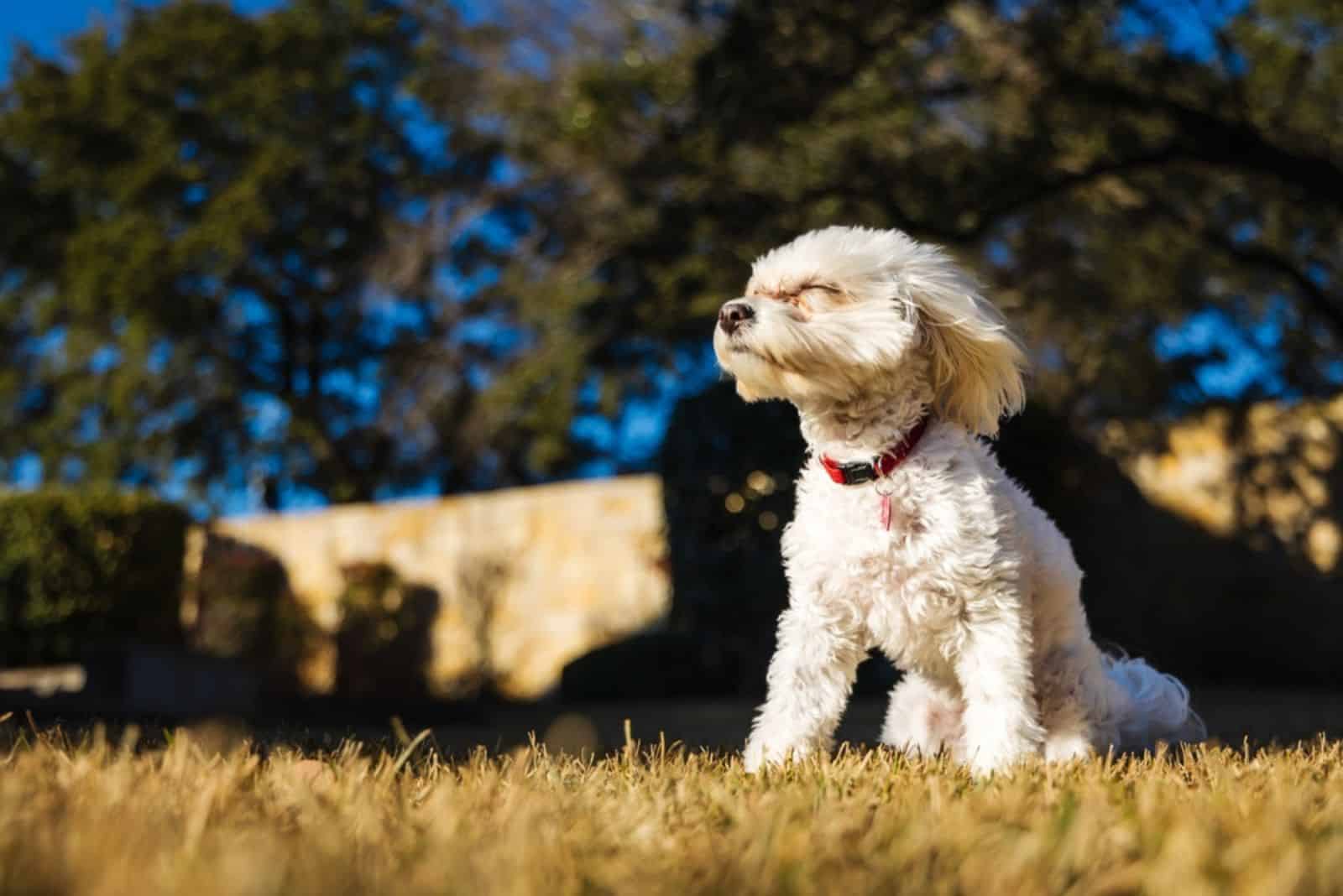
Both parent breeds can transfer their genetic predisposition to certain diseases onto the mixed breed, and in a large number of hybrid dogs, conditions from both parents can be found in the mix puppy.
This problem is particularly relevant for Teacup Maltipoo dogs because they are selectively bred from only the smallest dogs in their respective litter. With that unethical breeding practice, conditions that would otherwise be avoided are introduced into the mix.
Puppy mills and backyard breeders are known for their unethical approaches, so the first line of defense would be finding one that can provide health certificates and clear genetic tests of the puppy’s parents. Here is a list of the most common health problems in Maltipoos.
Read More: 7 Best Maltipoo Breeders In Florida You Can Trust
Patellar Luxation
This condition is an anatomical abnormality that is characterized by a moving patella. The patella is the cartilage tissue that keeps the knee in place. This means that the kneecap becomes dislocated or moves out of the natural position.
Your dog might have patellar luxation without you making a big deal out of it. That is because the kneecap often pops back into place with movement. The main symptom is running on three legs or an abnormal gait.
The treatment depends mainly on the stage of patellar luxation. The higher stages mean the situation is worse. Hence, more complicated surgery is necessary.
If the diagnosis of PL is established before major damage is done without the onset of arthritis, your pet will have a great quality of life after recovery.
Epilepsy
As the leading neurological condition affecting dogs, epilepsy is incurable, but dogs usually react well to anticonvulsant therapy. Epilepsy will cause your Maltipoo to have recurring seizures, and seizures are involuntary muscle spasms.
Some episodes of epileptic seizures can be very difficult to watch, but at least your dog is not feeling pain during the seizure. The biggest danger of seizures is injury due to loss of control over the body.
If your Maltipoo has epilepsy, you should be aware that there are three types: structural, idiopathic, and of unknown cause. Structural epilepsy can be diagnosed due to a visible brain anomaly, idiopathic indicates genetic causes, and unknown is pretty self-explanatory.
Your dog will have to be on anticonvulsive medication for the duration of its life, but should otherwise be the happy dog you know it to be.
Shaker Syndrome
This condition most often affects dogs with predominantly white coat color. Since the Maltese parent is commonly white, the Maltipoo might inherit this predisposition for idiopathic cerebellitis.
The cerebellum is the segment of the brain that is dedicated to muscle control and coordination. Inflammation of unknown origin puts pressure on this part of the brain, causing the dog to shake uncontrollably.
Shaker syndrome can sometimes go undetected because pet parents mistake it for hypothermia or stress, but the shaking is present due to an inflammatory process. Research suggests the cause of Shaker syndrome to be mild central nervous system disease.
Corticosteroids are the most common therapy because their use will decrease the pressure on the brain by decreasing the intensity of the inflammation.
Canine Portosystemic Shunt
The liver is one of the most important organs in the body. With its blood filtration role, it makes sure that the blood that circulates through the vascular system is clear of all toxins.
A canine portosystemic shunt will cause an abnormal connection between the portal vein (leading unfiltered blood into the liver) and another vein outside the liver itself.
The bypassing of filtration causes toxins to keep circulating through the body and increases the risk of infection and death. If you notice your dog is not growing properly, has a poor coat, has an overall ill appearance, seems disoriented, or circles a lot, then you might want to call the vet.
Treatment consists of diet change, and it aims to lower protein intake. A hydrolyzed protein diet is often recommended. Lactulose is a sugar that makes the intestine absorb fewer toxins, creating a less hostile environment for nutrients.
Lowering the amount of natural flora in the intestine with the use of antibiotics can help in the long-term management of CPS.
Legg-Calve-Perthes Disease
Clots that form in the blood vessels in the proximity of the hip can obstruct blood flow. Without blood, the bone tissues become brittle and wear off with movement and time. Any change in bone structure will lead to arthritis, which means your dog will feel pain and have trouble walking.
Science is not yet sure about the causes of Legg-Calve-Perthes Disease, but everything points to it being congenital. Most often, only one leg is affected, and it is commonly a hind leg.
Not using the muscles of the leg due to pain, the muscles can often atrophy, leading to a substantial loss of muscle mass and general volume of the leg.
Surgery is performed only if the dog does not respond positively to medication. Pain meds such as NSAIDs are used to lessen the hurting, while obesity prevention is a lifestyle change that can help prolong your Maltipoo’s lifespan.
Maltipoo FAQ
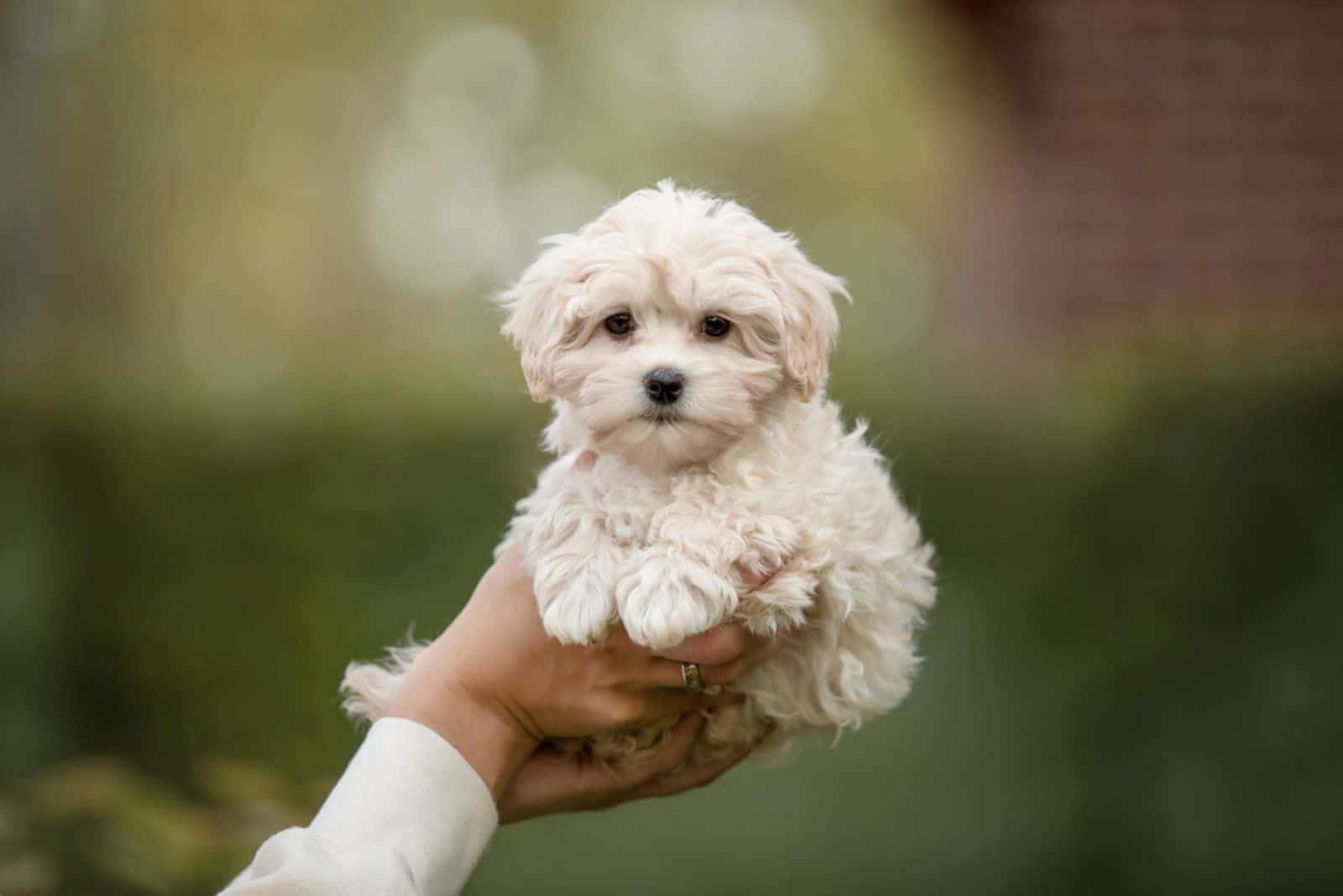
Are Maltipoos High Maintenance?
Dog owners of various designer breeds will tell you that the best dog is the one that best fits your style. Maltipoos shed very little, which is great for allergies, but they require three or four grooming sessions per week.
The Maltese belongs to the terrier category of dogs, so digging and earthen activities will be present in your Maltipoo too. It will get dirt, mud, and other particles on its coat, requiring detangling and washing.
Make sure you do not wash your dog too often, as it removes natural oils and minerals from the skin. Three to four times per year is plenty for a Maltipoo.
What Are Some Breeds That Are Closely Related To Maltipoos?
Well, if we are talking about direct connections, the Maltese and Poodle are the closest you can get to a Maltipoo, given that they constitute the parent breeds. They have quite different characters and physical features, so the Maltipoo is probably a good middle ground.
In terms of size, general appearance, and demeanor, you could say a Cavapoo is very similar to the Maltipoo. If you want to find out more about the Cavapoo, we have a great article comparing these two mixed breeds.
Alternatively, you can explore mixes that include one of the Maltipoo parent breeds. Maltese mixes are always in high demand, but these twenty-five Poodle mixes simply outrank them in the allergy category.
Do Maltipoos Like To Be Held?
Of course, they do. Maltipoo puppies are small, cute, and fragile, so hold them, you must! This crossbreed is a very social dog, so being as close as possible to its owner is the best form of affection.
Despite having the Maltese herding gene somewhere in there, they built successful careers as therapy dogs. The calmness and good read of the situation allowed them to bond with people, helping many who were going through rough patches in life.
Summary
Are Maltipoos good dogs? They are great dogs if you are looking for the traits specific to them. Breeders breed dogs that appeal to a wide audience, so you could say that Maltipoos are held in high regard among dog lovers and owners.
If the negative sides of these dogs feel like too much for you to handle, then make sure you first understand what you require from your future dog. After you crystalize in your head what it is you desire and want to avoid in a dog, the choice will be much easier.
I believe that Maltipoos are great for first-time dog owners. They can be very human-dependent, but being so small is not easy in a big world. Hopefully, this article helped you get closer to a decision, and now you are ready to take on pet parenting.
Read Next: Maltipoo Breeders In Oregon – 3 Is The Pawfect Number
